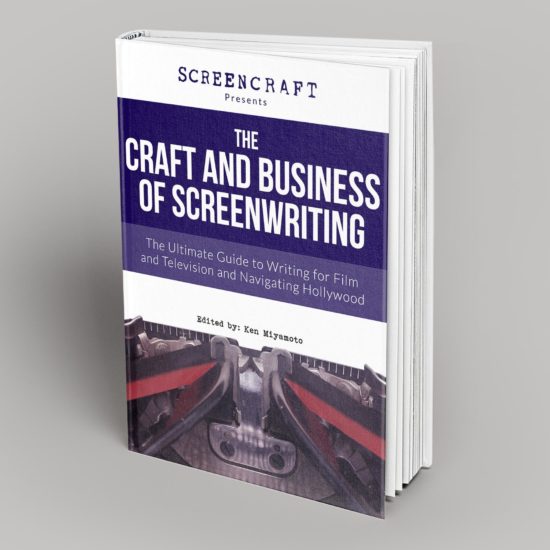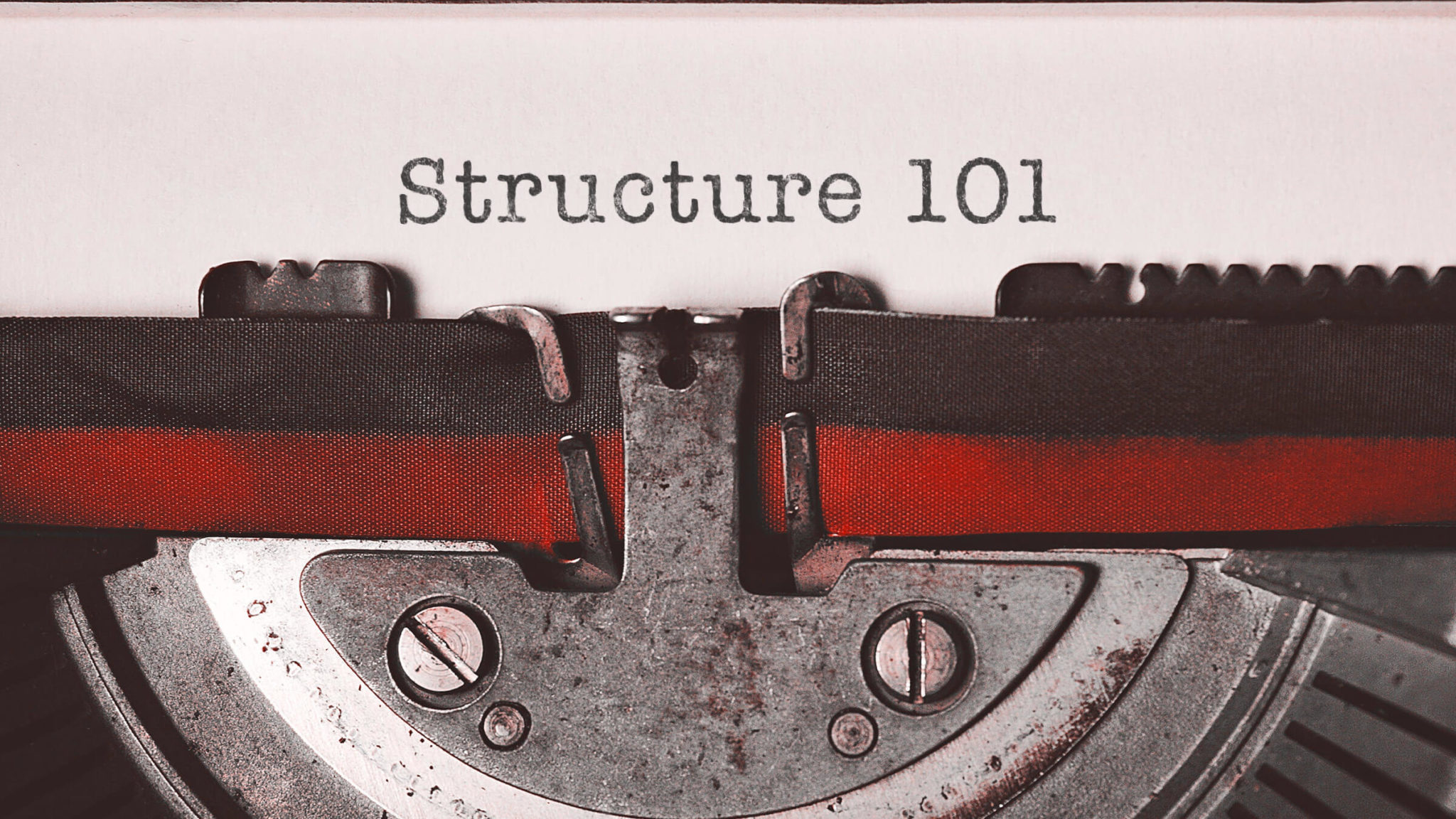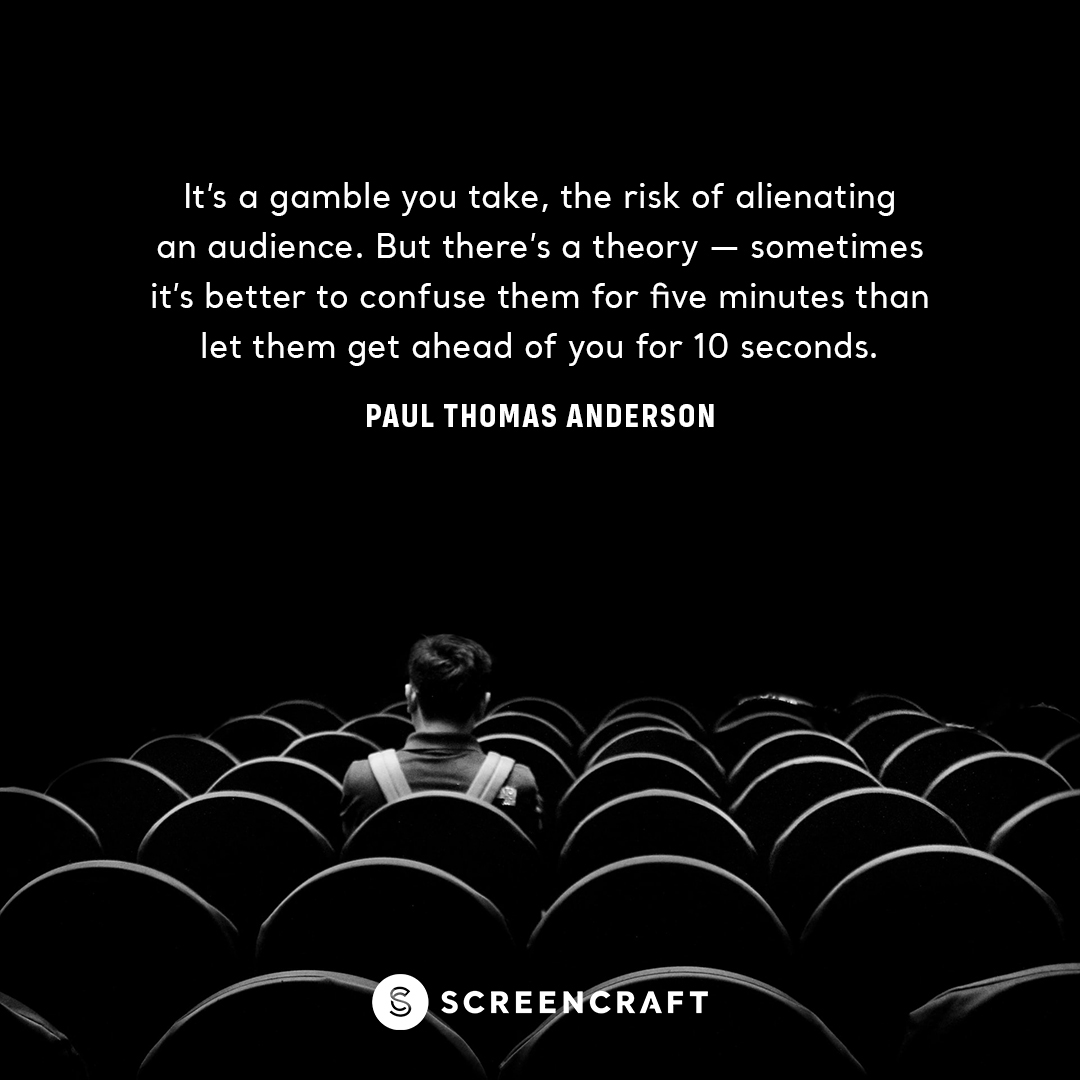3 Life-Changing Steps to Proofreading Your Screenplays

What are some life-changing secrets to proofreading your screenplays?
When you reach the end of your screenplay and type Fade to Black, Fade Out, or The End, your work isn't done yet. It's only just begun.
The real writing begins in the rewriting phase. You've spent months trying your best to communicate the story that's in your head by translating those story points, concepts, characters, and images into the cinematic language of a screenplay.
Read ScreenCraft's 7 Ways to Master the Art of the Script Rewrite!
Now you are tasked with taking all of that information and crafting the best possible cinematic experience through editing and rewriting — and proofreading your draft is the beginning of that process.
For screenplays, proofreading isn't just about finding spelling, grammar, and punctuation mistakes. You do want to take care of those mistakes to better the read of your script, but proofreading a screenplay is so much more than that.
It's about crafting the best possible cinematic experience.
Screenplays aren't just another storytelling platform. They serve the unique purpose of being a blueprint for a cinematic collaboration of hundreds upon hundreds of professionals that have one sole objective — to create a compelling and entertaining film. And to accomplish that, the screenplay needs to lay the foundation of what must be an excellent cinematic experience.
Too many screenwriters forget that factor. It needs to read like a movie. It needs to feel like a movie. It needs to prove that the story is worthy of becoming a movie.
And it all starts with the proofreading of each draft.
Proofreading is what catches those spelling, grammar, and punctuation mistakes, yes. But as a screenwriter, you need to take that process even further.
Here we share three life-changing proofreading steps that will lead to the best possible cinematic screenplay.
1. Concentrated and Focused Read
This is the first proofread step. It's the one that will catch those spelling, grammar, and punctuation mistakes.
You need to find a time and place for this proofread that has no distractions. Many writers are accustomed to writing in book stores, coffee shops, or other public places. These environments offer multiple distractions. And when you are searching for those ever-evasive spelling, grammar, and punctuation mistakes that are difficult enough to locate already, any little distraction can derail a successful revision.
Sequester yourself. There can't be any distractions — even the most subtle. The only person in the room should be you. No people in the background, no cars driving by, no birds in the sky.
Turn off your phone. Every time you glance at a notification, you've lost your focus.
Read line-by-line, no scanning. Your mind will try to tell you that you've read all of these words ten times over already. Don't listen to it. As boring and laborious as it may be, the purpose of this read is to find every little error you can. And you can't do that when scanning or skimming pages.
Don't experience the story. That's not what this read is for. You're there to read the words and check for errors. If you get caught up in the story, your focus will shift.
Once you've completed the whole script and made your revisions, take a few days away from it before the second step.
2. Read the Script Aloud to Yourself
It's time to return to your sequestered location and time. You're about to reread the script. But this time, you are going to read the script out loud.
Yes, that means every location heading, every line of scene description, and every line of dialogue.
This verbal read will help locate additional grammar errors, reveal holes in terms of missing information, divulge awkward word placements, and help find repetitive words scattered throughout the script.
Verbalizing the words you've written is a life-changing way to write better. And it gets you out of your own head — which contains your own pre-conceived concepts, tone, and atmosphere — so that you can experience the read as an outside reader.
This process will help you craft more precise and articulate lines of scene description and better dialogue.
If you're reading scene description lines out loud and find yourself struggling for breath because of long run-on sentences or lengthy paragraphs, you'll recognize the areas within your script that need paring down.
If you're reading dialogue out loud and it just doesn't sound real, you'll find opportunities to reword dialogue in a more naturalistic fashion, or discover that you don't even need those lines at all.
Read ScreenCraft's The Single Secret of Writing Great Dialogue!
Reading your script aloud to yourself will be a life-changing process. It will better the read of the script, and your dialogue will improve tenfold.
3. Organize a Table Read
It's one thing to read the words you've written aloud and a whole different experience to hear others read them.
The table read is utilized by the most talented cinematic storytellers in Hollywood — whether it's for feature films or episodic television series.
When you hear others read your scene description and your dialogue, it's the closest thing to seeing the script come alive on the screen. And you can then work as an editor before a single frame has been filmed.
You'll discover plot holes, characterization inconsistencies, on-the-nose dialogue, terrible exposition dialogue, etc.
If you don't have an inner circle of peers to take part in the table read, you can go to acting groups, local film students, or just utilize your friends and family.
If you can get a few actors into the room, it will make a world of difference in terms of performance and feedback.
But remember, you have to be able to observe the table. If possible, you shouldn't be the one reading scene description and location headings. And you certainly shouldn't be reading any of the characters.
Delegate those reading duties to others so that you can sit in front of your laptop or (preferably) have a hard copy of the script within your hands as you take notes throughout the whole table read.
During this process, you'll discover so many things about your screenplay, characters, and story that you would have never experienced reading it by yourself.
You'll see which lines of dialogue work, and which don't. You'll be able to gauge the reaction of the people reading the script. You'll find moments that work brilliantly, and others that fall short.
And all of this information will inform your next draft.
These three proofreading steps — concentrated and focused read, reading the script aloud to yourself, and organizing a table read — will change your life as a screenwriter.
You'll be able to craft better final drafts. You'll learn lessons that you can apply to your next screenplays. You'll become a better writer.
Ken Miyamoto has worked in the film industry for nearly two decades, most notably as a studio liaison for Sony Studios and then as a script reader and story analyst for Sony Pictures.
He has many studio meetings under his belt as a produced screenwriter, meeting with the likes of Sony, Dreamworks, Universal, Disney, Warner Brothers, as well as many production and management companies. He has had a previous development deal with Lionsgate, as well as multiple writing assignments, including the produced miniseries Blackout, starring Anne Heche, Sean Patrick Flanery, Billy Zane, James Brolin, Haylie Duff, Brian Bloom, Eric La Salle, and Bruce Boxleitner. Follow Ken on Twitter @KenMovies
For all the latest ScreenCraft news and updates, follow us on Twitter, Facebook, and Instagram.
Tags
Get Our Screenwriting Newsletter!
Get weekly writing inspiration delivered to your inbox - including industry news, popular articles, and more!




























